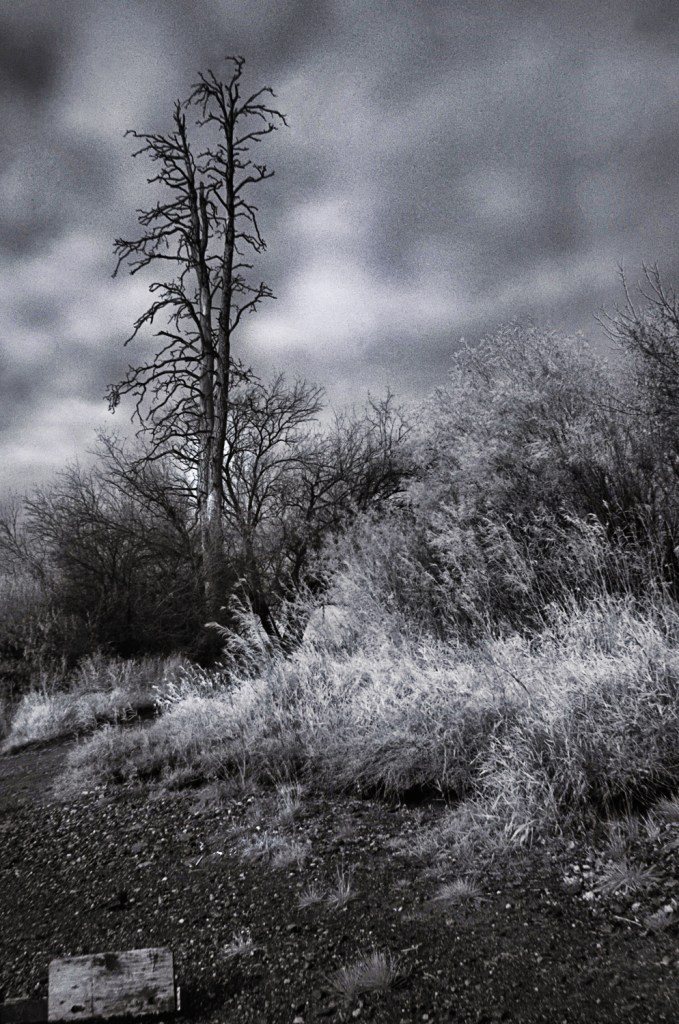


I received a call last week asking me if I would be willing to photograph a car. When I retired I made the decision to decline photography jobs. I pretty much live and breath photography, and I worked as a photographer for over 40 years.
But when I retired I decided it was time to return to the unrestricted and pure enjoyment that I had when I photographed anything and everything for no other reason than to make pictures after taking that first college photo class in the early 1970s.
So I was somewhat hesitant with my reply to the caller that wanted his car photographed. I think he realized that and quickly finished with, “Oh and my car is a McLaren”.
Geez, of course I quickly agreed to photograph it and said I’d come after I closed my shop at 4:30 to talk about the photographs.
In my imagination I was thinking of all sorts of interesting locations and creative lighting that could try. Gosh, a McLaren race car. That’s a legend that I wanted to see up close and the chance to photograph it would be…hmm…”Pure enjoyment”.
I arrived at his home and was guided to a garage at back of his property. On entering I saw a shinny car with its gull-wing doors wide open. The shop was wall-to-wall machinery and tools. I’m sure that place put my high school metal shop to shame. And wow, there was a very expensive racecar sitting in the center.
I spent an enjoyable evening listening to the owner discusses his 1974 McLaren and his well-equipped shop. All the while I was also looking at the space the car was in and clearly remembered all the stuff just outside and in front of the garage door. And asked, “do you want to move the car out or want it photographed right here”. I all ready knew what he would answer. Damn, there went all the exotic locations and creative lighting.
I often tell people when I am teaching classes that Photography is a series of problems to be solved. Well, as I stepped back as far as I could in the corner between a shelf packed with engine parts and a large drill press to see how far I could stand away from the front corner of the car I was absolutely thinking that this was going to be a “series of problems to solve.”
I asked my friend Jo if she would like come with me, and a week later I was introducing her to the McLaren and it’s owner.
I had brought some speed lights, two large octaboxes, stands and two lenses, my 14-24mm and 24-70mm. I figured I would need to spend a couple sessions figuring out the light in that cramped location. As it was, after some testing we decided that we would need lots more lights and additional light defuses. The next problem would be the time erasing the lightstands and rebuilding the multiple backgrounds where the stands were removed from.
Jo set her camera’s ISO to 2000, crouched down and took a couple shots using the 14-24mm. When I looked at her images I realized that I could easily change the lighting by under or over exposing my shots. And it would be easier cloning out unwanted reflections and removing background behind the car than returning in a couple of days with more lights, setting them up, then spending time cloning out several lightstands.
With music from ZZ Top on the McLaren’s sound system (I think the owner is a real fan. There were two DVD’s sitting on the car seat) Jo and I photographed the car.
We constantly traded lenses as we found different angles and places to photograph that car from. I watched Jo pull her camera’s LCD out and hold the camera low as if she were using one of those old Twin lens cameras that had waste level finders. My camera’s LCD articulates too, I just never have bothered to use it, but that was a good idea and I held my camera over my head at arms length and got some pretty good shots that looked like they were taken from a ladder.
I was glad I included Jo. I knew she looked at her subjects in different ways than I do. It’s always good to work with another photographer. Now that we have talked about the photos we made and I am now thinking I would like to try some coloured lights and shoot in low light with long exposures.


